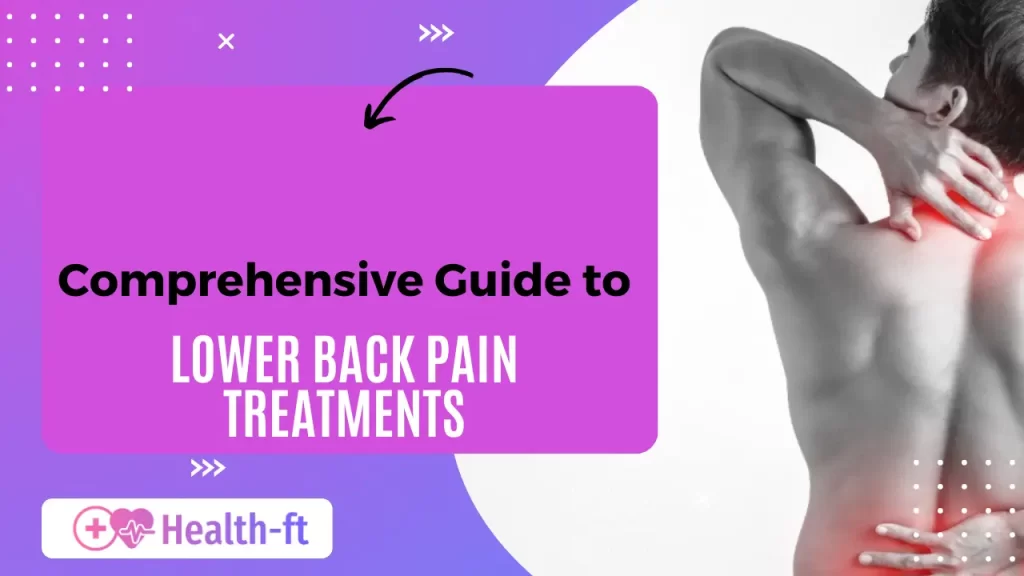Lumbar pain is quite common with millions of people around the world suffering from this condition. It can be a mere annoyance or a crippling pain that affects a person’s ability to walk, work or even sleep. Knowledge of etiology, signs and treatment for low back pain is crucial towards overcoming this condition and preventing chronicity.
This article goes through various medical approaches to dealing with lower back pain depending on certain conditions like pain in the right side above the butts, sudden severe pain when bending forward, and other factors for women. We will also give information on folklore remedies, physiotherapy management and when to consult a doctor.
What Are the Causes of Lower Back Pain?
Lower back pain arises from numerous causes, often a combination of factors, including:
-
Poor Posture
Sitting for long durations and with poor postures, slouched or no lower back support, can place stress on the lower spine.
-
Muscle Strain
In most situations, the back muscles or ligaments may be strained through excessive bending, lifting, or twisting of the back, or sudden jerks.
-
Herniated Discs
Herniated or ‘slipped discs happen when the soft tissue between the vertebrae pushes out and puts pressure on nerves, giving rise to pains.
-
Arthritis
This leads to inflammatory and stiffening changes in the intervertebral joints in osteoarthritis and inflammatory disorder in rheumatoid arthritis.
-
Injuries or Trauma
Lower back pain that occurs due to trauma may be a result of an accident, sports ora fall and may need medical attention.
-
Underlying Conditions
One can have a backache resulting from sciatica, kidney stones, endometriosis, or even an infection.
Depending on the causes of your lower back pain, it is easy to choose the right course of action to help you.
What Are the Treatments for Low Back Pain?
Treatment for low back pain involves a combination of home remedies, lifestyle changes, and medical treatments tailored to the severity and underlying cause.
Lower Back Pain on the Right Side Above the Buttocks
Pain in that area, such as the lower back and above the right buttocks, may result from strained muscles or a sacroiliac joint problem or even a kidney problem.
Treatment Options
Stretching Exercises
- Cat-Cow Stretch: Improves elasticity of the spine and acts on the tension.
- Piriformis Stretch: Helps relieve tension for the deep gluteal muscles.
Hot and Cold Therapy
- Heating pad can relieve tight muscles for about 15 – 20 minutes.
- One should use an ice pack over the affected area to minimize inflammation.
Hydration and Diet
- It is recommended that you take a lot of water to help your kidneys and avoid the formation of kidney stones.
- Minimise intake of foods that contain processed sodium.
When to Seek Medical Help
Any pain that lasts for weeks or even days and is associated with fever, blood in the urine or numbing sensations should elicit a doctor’s attention.
Lower back pain treatment at home
Patients with mild to moderate lower back pain derive many benefits from home remedies.
Rest and Recovery
- It is suggested to do bed rest, avoid strenuous activities for 24- 48hrs to avoid stiffness of muscles.
- Employ a firm or an orthopedic type of mattress when aiming for what’s best for the spinal column.
Over-the-Counter Pain Relief
Pain and swelling may be relieved with nonsteroidal anti-inflammatory medications, including ibuprofen, or acetaminophen.
Stretching and Mild Touching
- Employing simple activities like Yoga, walking or extending slight at the joints helps in the improvement of blood circulation and prevents stiffness.
- Try the child poses and the downward dog, which will help in stretching of the back.
Epsom Salt Baths
Mix a cup of Epsom salts with warm water and soak in the solution for about 15-20 minutes good for aching muscles and inflammation.
Home Prevention Tips
- Use enhanced food products include the use of calcium and vitamin D products in the diet.
- Try to keep your back straight at all possible times throughout the day.
- The physical exercise that people with lower back pain should perform frequently is aimed at strengthening the core muscles.
Sudden Sharp Pain in Lower Back When Bending Over
Sudden severe stiffness in the lower back, especially when one is bending over, is mainly as a result of muscle strain, ligament sprain, or in the worst-case scenario a slipped disc.
Immediate Actions
Do not get out of bed in the morning immediately, or perform any other activity that aggravates the pain you are experiencing.
Cold Therapy
After surgeries, the patient should be advised to try to elevate the limb and apply ice pack for 15 to 20 minutes every 2 to 3 hours for the first 48hrs, to reduce edema.
Gentle Stretching
Use the Child’s Pose or the Knee-to-Chest Stretch for relaxation to help free up the tight muscles.
Posture Correction
Sometimes it is okay to lift objects, but always bow at the knees, not the waist.
Strength Training
Make sure to do some exercises, such as planks, bird dogs, and bridges, to ensure that your core muscles are strong and can support your spine.
Use of Supportive Gear
If there is to be a lifting of massive items, use a lumbar support belt.
When to See a Doctor
Please consult your doctor if the pain is intense, all day long, or if it goes down your legs, this may be Sciatic or Disc herniation.
Manipulative and Physiotherapy Therapy for Acute Low Back Pain
Treatment for low back pain physiotherapy is extremely useful in treating acute and chronic LBP because it not only fixes the mechanical problem, but also fortifies the area.
Manual Therapy
Manual therapy helps increase joint flexibility and alleviate spasm of the muscle fibers.
Electrotherapy
TENS (Transcutaneous Electrical Nerve Stimulation): Stimulation of nerves interferes with the message of pain and simultaneously speeds up the healing process.
Exercise Therapy
Some of the exercises in this group are designed to build up the muscle support to the spine. This technique reduces pain generated by herniated discs, which are a part of the McKenzie spine syndrome.
Advantages of Physiotherapy
- Used in healthcare, which are customized to suit the client’s requirements.
- Patient mobility is promoted, and general reliance on medications is also reduced.
- Helps to maintain a lower back pain free state by providing specific strengthening exercises.
What Are The Female Treatments for Low Back Pain?
Lower back pain in women may be due to physiologic and hormonal changes during the menstrual cycle or pregna
ncy, or due to gynecologic disorders like endometriosis.
Available treatment for low back pain by Specific Causes
-
Menstrual-Related Pain
- Heat application should be applied as a pain reliever for cramps and relief of muscle spasm.
- Non-steroidal anti-inflammatory drugs such as ibuprofen should relieve pain and inflammation.
-
Pregnancy-Related Pain
- Try prenatal yoga or practice pelvic tilts to help with pain.
- You can wear a maternity belt for extra support of the lower back.
- Have your baby between your knees and sleep on your left side with a pregnancy pillow to support your spine.
-
Endometriosis or specific conditions affecting the female pelvis.
- Since gynecological problems are involved, seek medical management from your gynecologist.
- Some of the benefits of pelvic physiotherapy include the ability to reduce pain and at the same time increase function.
General Tips for Women
- Do not walk around for a long time while wearing high-heeled shoes.
- Include Kegel exercises in their recommended moves for strengthening up the pelvic floor muscles.
- Diet well to avoid pressure being applied to the lower back.
Who Should Consider Professional Help?
While many cases of lower back pain resolve with home care and lifestyle adjustments, certain situations require immediate medical attention:
- The condition fails to respond within seven to 10 days, or the symptoms are aggravated.
- Signs and symptoms are: the patient develops numbness, tingling or weakness in the legs.
- Pain has the features of fever, weight loss, or the inability to control of the bladder or bowels.
- There is a history of cancer, osteoporosis or a recent history of injury.
Conclusion
Pain in the lower back is regular and can be controlled to a certain extent. When arising from poor posture, muscle strain, or musculoskeletal conditions, the right approach to treatment for low back pain can produce excellent outcomes.
Often simple stretching, application of heat and cold packs, and ingestion of drugs available over the counter are enough for mild cases. In chronic or severe cases, physiotherapy and medicine might be the only solution. Over time, certain conditions, which may include menstrual pain or pregnancy-related discomfort, can be relieved through Yoga exercises, wearing belts and a gynecologist consultation.
So look out for this information, do your best to lead a healthy life and find out when it’s come the time to look for help from a specialist and you will be on the right path to a happy life!




